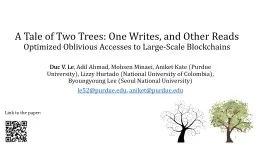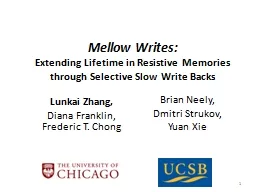PPT-A Tale of Two Trees: One Writes, and Other Reads
Author : min-jolicoeur | Published Date : 2019-12-18
A Tale of Two Trees One Writes and Other Reads Optimized Oblivious Accesses to LargeScale Blockchains Duc V Le Adil Ahmad Mohsen Minaei Aniket Kate Purdue University
Presentation Embed Code
Download Presentation
Download Presentation The PPT/PDF document "A Tale of Two Trees: One Writes, and Oth..." is the property of its rightful owner. Permission is granted to download and print the materials on this website for personal, non-commercial use only, and to display it on your personal computer provided you do not modify the materials and that you retain all copyright notices contained in the materials. By downloading content from our website, you accept the terms of this agreement.
A Tale of Two Trees: One Writes, and Other Reads: Transcript
Download Rules Of Document
"A Tale of Two Trees: One Writes, and Other Reads"The content belongs to its owner. You may download and print it for personal use, without modification, and keep all copyright notices. By downloading, you agree to these terms.
Related Documents














